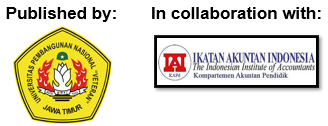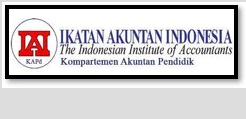Constructing Optimal Portfolios Using the Single Index Model and Markowitz Model: A Study on Cryptocurrencies
DOI:
https://doi.org/10.33005/jasf.v7i2.485Keywords:
Cryptocurrency, Optimal Portfolio, Single Index Model, Markowitz Model, Risk ManagementAbstract
This study analyzes the formation of optimal portfolios on cryptocurrency assets using the single index model and the Harry Markowitz model. This study covers 79 cryptocurrencies with the largest market capitalization during the period June 2023–June 2024. We calculate the optimal portfolio using the single index model and Markowitz, and evaluate its performance using the Sharpe Ratio. The results show that the Harry Markowitz model produces better portfolio performance compared to the single index model. The Markowitz portfolio produces a positive Sharpe ratio (1.8496), a portfolio return rate of 7.678%, and lower risk (0.0415). Conversely, the single index model portfolio shows a negative Sharpe ratio (-2.0971), indicating lower returns than risk-free assets. In addition, the Markowitz model offers more efficient diversification than the single index model. However, in general, both the Single Index Model and the Markowitz Model have a significant effect on the formation of optimal portfolios, with the Sharpe Index proving to be a significant mediator in the relationship between the two models and the optimal portfolio. The R-squared value shows that the SIM variables, Markowitz Model, and Sharpe Index explain 48.4% of the variation in the optimal portfolio. This study recommends the use of the Harry Markowitz model for cryptocurrency investment because it can provide higher returns with more controlled risks. This study provides important insights for investors on the strategy of diversifying cryptocurrency asset portfolios.
Downloads
References
Abdelmalek, W. (2023). Cryptocurrencies and portfolio diversification before and during COVID-19. EuroMed Journal of Business, July. https://doi.org/10.1108/EMJB-10-2022-0182
Ahmadi, H. (2023). Is Cryptocurrency Risky as An Investment Instrument? Analysis of Return and Risk with A Comparison of Sharia Stocks. International Journal of Islamic Business Ethics, 8(1), 40. https://doi.org/10.30659/ijibe.8.1.40-53
Akadur, O., & Senkardes, C. G. (2021). A research on the factors affecting cryptocurrency investments within the gender context. Pressacademia, 10(4), 178–189. https://doi.org/10.17261/pressacademia.2021.1463
Aljinović, Z., Marasović, B., & Šestanović, T. (2021). Cryptocurrency portfolio selection—a multicriteria approach. Mathematics, 9(14). https://doi.org/10.3390/math9141677
Bartolucci, S., & Kirilenko, A. (2020). A model of the optimal selection of crypto assets. Royal Society Open Science, 7(8). https://doi.org/10.1098/rsos.191863
Brauneis, A., & Mestel, R. (2019). Cryptocurrency-portfolios in a mean-variance framework. Finance Research Letters, 28, 259-264. https://ssrn.com/abstract=3124832 or http://dx.doi.org/10.2139/ssrn.3124832
Castro, J. G., Tito, E. A. H., Brandão, L. E. T., & Gomes, L. L. (2020). Crypto-assets portfolio optimization under the omega measure. Engineering Economist, 65(2), 114–134. https://doi.org/10.1080/0013791X.2019.1668098
Colombo, J. A., Cruz, F. I., Cortes, R. X., & Paese, L. H. (2019). Are cryptocurrencies suitable for portfolio diversification? Cross-country evidence. Anpec. Org. Br, 0-19. https://www.anpec.org.br/encontro/2019/submissao/files_I/i8-a2719c2b29132625fa99c7f2b5ed47c3.pdf
Dong, S., Abbas, K., Li, M., & Kamruzzaman, J. (2023). Blockchain technology and application: an overview. PeerJ Computer Science, 9(November). https://doi.org/10.7717/peerj-cs.1705
Hardani, E. al. (2020). Metode Penelitian Kualitatif & Kuantitatif. CV. Pustaka Ilmu Group.
Hrytsiuk, P., Babych, T., & Bachyshyna, L. (2019). Cryptocurrency portfolio optimization using Value-at-Risk measure. Advances in Economics, Business and Management Research, 95(Smtesm), 385–389. https://doi.org/10.2991/smtesm-19.2019.75
Ichsani, S., & Pamungkas, A. (2022). Analisis perbandingan kinerja aset kripto, ihsg dan emas sebagai alternatif investasi periode 2017-2021. JIIP-Jurnal Ilmiah Ilmu Pendidikan, 5(6), 2025-2034. https://doi.org/10.54371/jiip.v5i6.674
Letho, L., Chelwa, G., & Alhassan, A. L. (2022). Cryptocurrencies and Portfolio Diversification in an Emerging Market. China Finance Review International, 12(1), 20–50. https://doi.org/10.1108/CFRI-06-2021-0123
Li, J. P., Naqvi, B., Rizvi, S. K. A., & Chang, H. L. (2021). Bitcoin: The biggest financial innovation of fourth industrial revolution and a portfolio’s efficiency booster. Technological Forecasting and Social Change, 162(September 2020), 120383. https://doi.org/10.1016/j.techfore.2020.120383
Lumbantobing, C., & Sadalia, I. (2021). Analisis Perbandingan Kinerja Cryptocurrency Bitcoin, Saham, dan Emas sebagai Alternatif Investasi. Studi Ilmu Manajemen Dan Organisasi, 2(1), 33–45. https://doi.org/10.35912/simo.v2i1.393
Ma, Y., Ahmad, F., Liu, M., & Wang, Z. (2020). Portfolio optimization in the era of digital financialization using cryptocurrencies. Technological Forecasting and Social Change, 161(August), 120265. https://doi.org/10.1016/j.techfore.2020.120265
Maf’ula, Z., Handayani, S. R., & Z.A, Z. (2018). Portofolio Optimal dengan Penerapan Model Markowitz sebagai Dasar Keputusan Investasi (Studi pada Perusahaan yang Tergabung dalam Indeks LQ-45 Tahun 2014). Jurnal Administrasi Bisnis, 63(1), 1–7. https://administrasibisnis.studentjournal.ub.ac.id/index.php/jab/article/view/2695
Meiryani, Marco, Albert, & Ayuanda, N. (2023). Investment decisions: Comparative analysis of the performance of cryptocurrencies Bitcoin, Gold and Stocks. E3S Web of Conferences, 426. https://doi.org/10.1051/e3sconf/202342601108
Moreno, D., Antoli, M., & Quintana, D. (2022). Benefits of investing in cryptocurrencies when liquidity is a factor. Research in International Business and Finance, 63, 101751. https://doi.org/10.1016/j.ribaf.2022.101751
Putri, A. P., Yusnita, R. R., & Mochtar, R. A. F. (2023). Pemilihan Portofolio Cryptocurrency: (Bitcoin, Yearn.Finance, Dogecoin, Binance Coin, Cardano, Dan Monero). Bisnis-Net Jurnal Ekonomi Dan Bisnis, 6(1), 127–141. https://doi.org/10.46576/bn.v6i1.3249
Rahma, A. S., Saifi, M., & Nuzula, N. F. (2022). Optimal Portfolio Using Single Index Model and Alpha Jensen for Best Investment Alternative (Study on IDX30, BISNIS27, and INVESTOR33 Stocks on the Indonesia Stock Exchange 2017-2019 Period). Indonesian Journal of Social & Humanity Study/Wacana: Jurnal Sosial dan Humaniora, 25(3). https://doi.org/10.21776/ub.wacana.2022.025.03.03
Sahu, S., Ochoa Vázquez, J. H., Ramírez, A. F., & Kim, J. M. (2024). Analyzing Portfolio Optimization in Cryptocurrency Markets: A Comparative Study of Short-Term Investment Strategies Using Hourly Data Approach. Journal of Risk and Financial Management, 17(3). https://doi.org/10.3390/jrfm17030125
Sharma, D., Verma, R., & Sam, S. (2021). Adoption of cryptocurrency: an international perspective. International Journal of Technology Transfer and Commercialisation, 18(3), 247. https://doi.org/10.1504/ijttc.2021.118863
Sharpe, W. F. (1994). The Sharpe Ratio. Streetwise: The Best of The Journal of Portfolio Management, 169–178. https://doi.org/doi:10.1515/9781400829408-022
Solin, M. M., Alamsyah, A., Rikumahu, B., & Saputra, M. A. A. (2019). Forecasting portfolio optimization using artificial neural network and genetic algorithm. 2019 7th International Conference on Information and Communication Technology, ICoICT 2019, 1–7. https://doi.org/10.1109/ICoICT.2019.8835344
Stiawan, E. (2022). Manajemen Inavestasi, Portofolio, dan Pasar Modal (A. S. Putra (ed.); Volume 1). CV. Sinar Jaya Berseri.
Yahya, J. (2022). Problematika Pembelajaran Pendidikan Agama Islam Di Sekolah Menengah Pertama (SMP) Islam Muqorrobin Singosari. In Science (Vol. 7, Issue 1).
Yanida, P., Pratiwi, L. N., & Nugrahani, W. P. (2023). Comparative Evaluation of Portfolio Performance: A Study of Cryptocurrency, Stock, and Foreign Exchange Investments. Jurnal Ilmu Keuangan Dan Perbankan (JIKA), 13(1), 45–62. https://doi.org/10.34010/jika.v13i1.10314
Yuhanitha, N. ., & Robiyanto, R. (2021). Cryptocurrencies as a Hedge and Safe Haven Instruments during Covid-19 Pandemic. JASF: Journal of Accounting and Strategic Finance, 4(1), 13–30. https://doi.org/10.33005/jasf.v4i1.129
Yuliana, A. F. ., & Robiyanto, R. (2022). Revisit the Dynamic Portfolio Formation between Gold and Stocks in Indonesia in the Period Before and During the COVID-19 Pandemic. JASF: Journal of Accounting and Strategic Finance, 5(1), 1–21. https://doi.org/10.33005/jasf.v5i1.161
Yunita, I. (2023). Evaluasi Kinerja Investasi Saham Syariah menggunakan Indeks Sharpe, Treynor dan Jensen Periode 2021-2022. Jurnal Ilmiah Ekonomi Islam, 9(1), 435–442. http://dx.doi.org/10.29040/jiei.v9i1.7348
Zhang, Z. (2022). The Optical Portfolio of the Markowitz Model and the Index Model. Proceedings of the 2022 7th International Conference on Financial Innovation and Economic Development (ICFIED 2022). https://doi.org/10.2991/aebmr.k.220307.248














